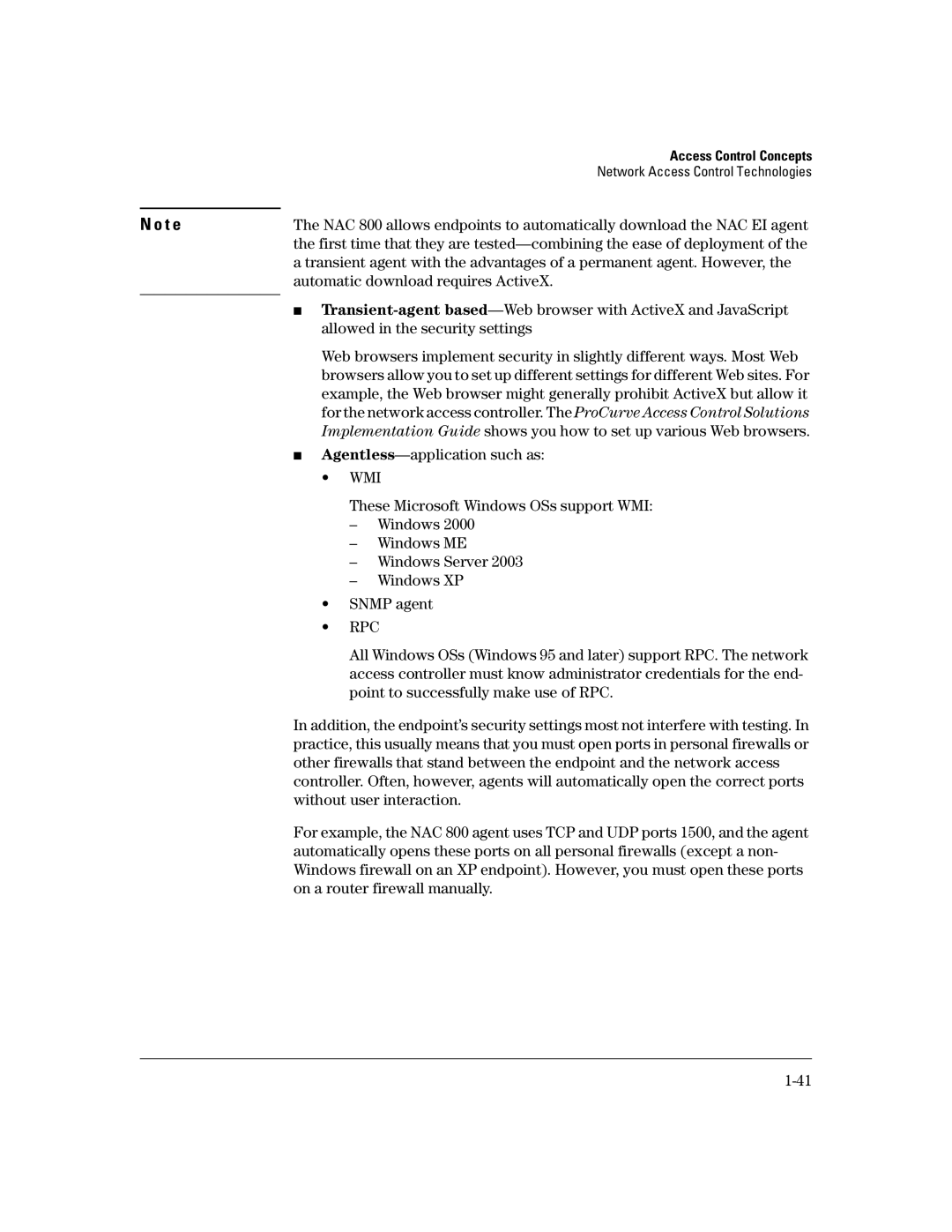|
|
| Access Control Concepts |
|
|
| Network Access Control Technologies |
|
| ||
N o t e | The NAC 800 allows endpoints to automatically download the NAC EI agent | ||
| the first time that they are | ||
| a transient agent with the advantages of a permanent agent. However, the | ||
| automatic download requires ActiveX. | ||
| ■ | ||
| |||
| allowed in the security settings | ||
| Web browsers implement security in slightly different ways. Most Web | ||
| browsers allow you to set up different settings for different Web sites. For | ||
| example, the Web browser might generally prohibit ActiveX but allow it | ||
| for the network access controller. The ProCurve Access Control Solutions | ||
| Implementation Guide shows you how to set up various Web browsers. | ||
| ■ | ||
| • | WMI | |
|
| These Microsoft Windows OSs support WMI: | |
|
| – | Windows 2000 |
|
| – | Windows ME |
|
| – | Windows Server 2003 |
|
| – | Windows XP |
| • | SNMP agent | |
| • | RPC | |
|
| All Windows OSs (Windows 95 and later) support RPC. The network | |
|
| access controller must know administrator credentials for the end- | |
|
| point to successfully make use of RPC. | |
In addition, the endpoint’s security settings most not interfere with testing. In practice, this usually means that you must open ports in personal firewalls or other firewalls that stand between the endpoint and the network access controller. Often, however, agents will automatically open the correct ports without user interaction.
For example, the NAC 800 agent uses TCP and UDP ports 1500, and the agent automatically opens these ports on all personal firewalls (except a non- Windows firewall on an XP endpoint). However, you must open these ports on a router firewall manually.
